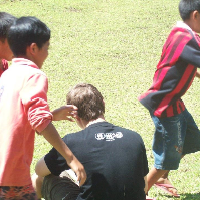I have two objects, one object is larger than the other. The larger object is keyboard controlled while the smaller is randomly moving by the computer/program. When the larger object is requested to move there is hesitation in the automated movement of the smaller object.
In Greenfoot, does its environment use some form of parallelism when it allocates the CPU to each act( ) execution to give the impression that all objects move in parallel (at the same time)?




